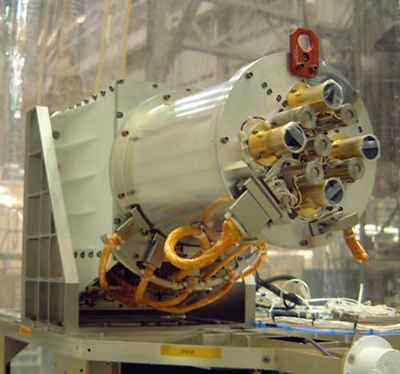
The NISTAR instrument prior to mounting on the DSCOVR spacecraft.
The NIST Advanced Radiometer (NISTAR), mothballed for more than a decade, is slated to make its space debut very soon about 1.5 million kilometers sunward of Earth. It will fly as part of the long-postponed Deep Space Climate Observatory (DSCOVR) mission, led by NOAA in partnership with NASA and the U.S. Air Force, scheduled for launch in January, 2015.
DSCOVR's primary task is to collect measurements to enable space weather forecasting by NOAA. But it will also carry two instruments designed for continuous daylight observation of Earth's surface -- a capability not available previously.
One is NISTAR, designed and built between 1999 and 2001 by a collaboration of Ball Aerospace and Technology Corporation and the NIST Optical Technology Division, in conjunction with the Scripps Institute of Oceanography and NASA.
NISTAR's four detectors can measure light reflected and emitted from Earth in infrared, visible, and ultraviolet wavelengths. Ten years after its initial construction, the instrument was re-calibrated in vacuum by PML's SIRCUS facility (for spectral irradiance and radiance responsivity calibrations using uniform sources) before mounting on DSCOVR.
"NISTAR will be the first instrument that will measure the power coming from the full continuously sunlit side of Earth," said Joe Rice, Leader of PML's Infrared Technology Group. "This will be used to augment current methods for monitoring Earth's radiation budget for climate science."

